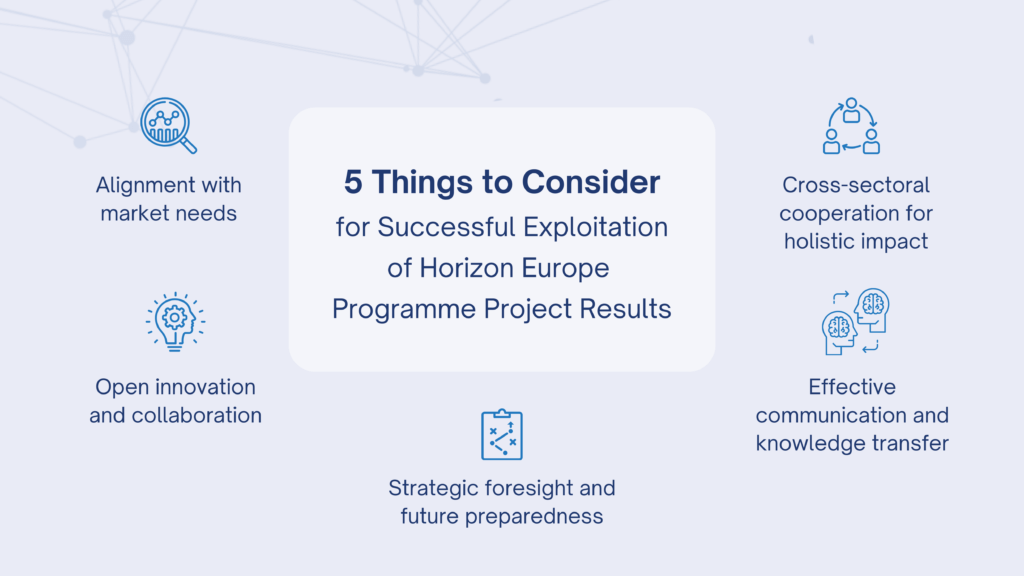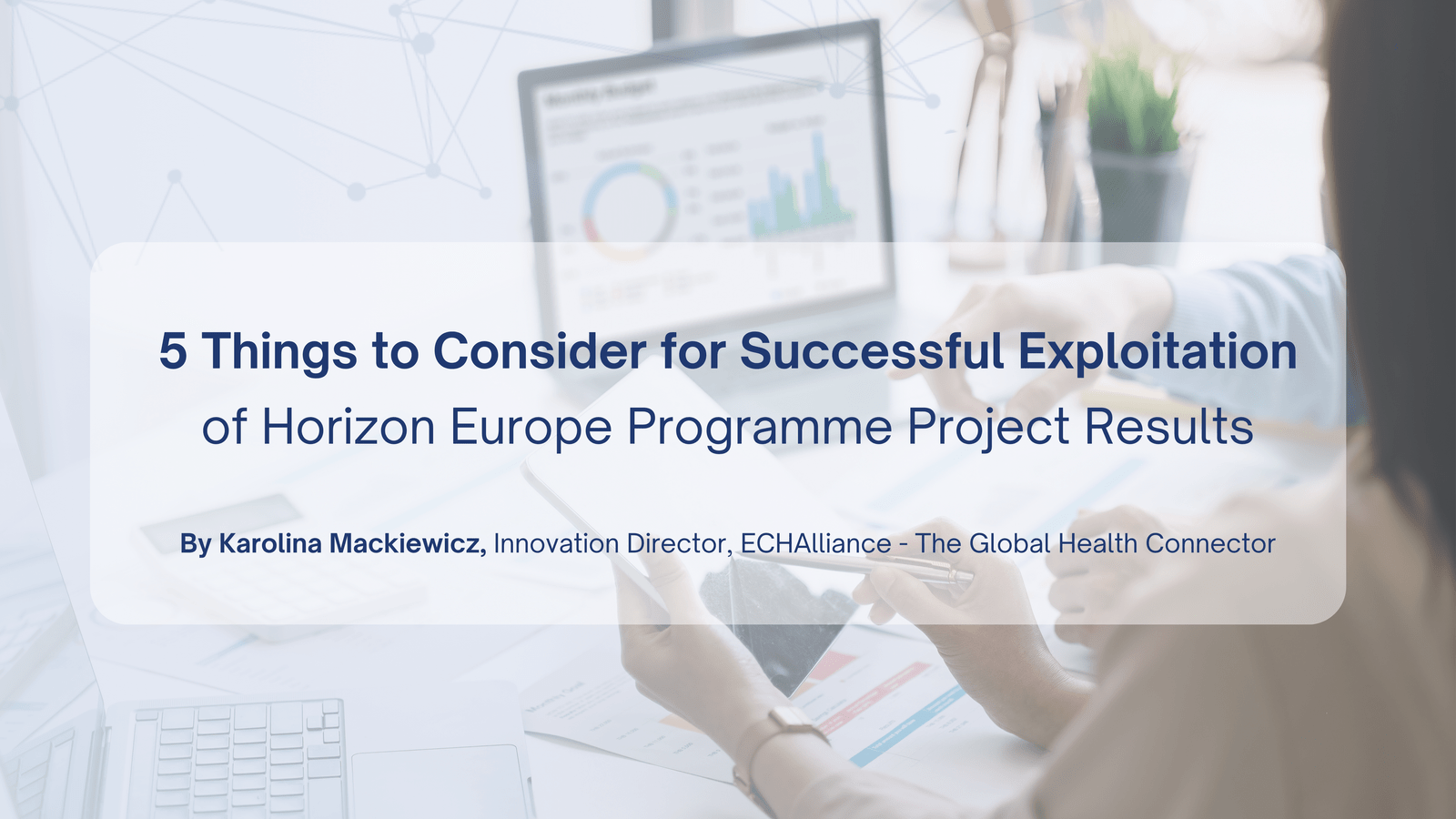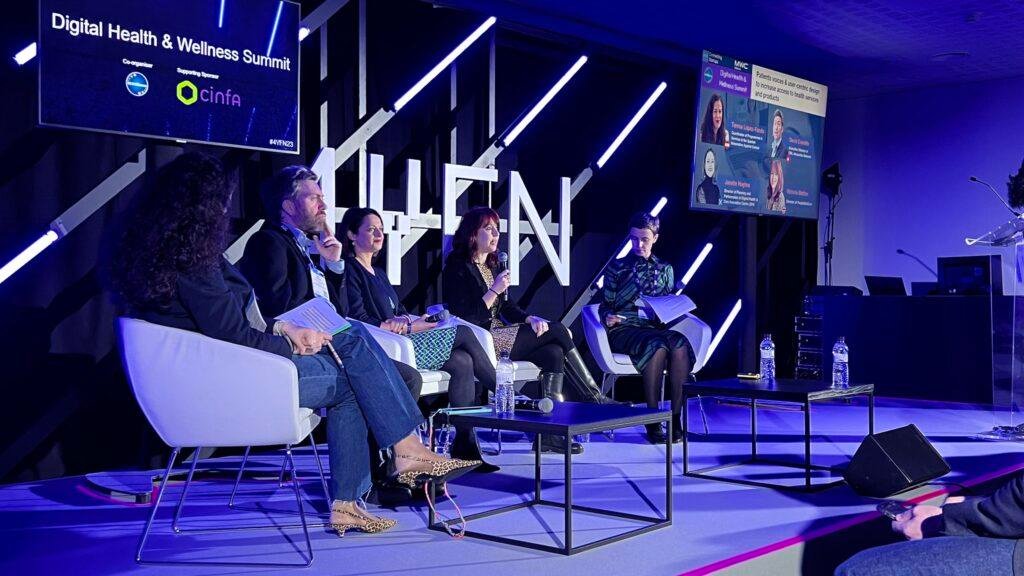In the dynamic landscape of research and development, the European Commission emphasises the importance of a proper exploitation plan for each project funded under the Horizon Europe programme. In this context, exploitation denotes the strategic utilisation of research outcomes to develop, improve, and promote products, processes, or services. It may also involve augmenting public knowledge and instigating actions with potential effects on diverse aspects of society.. Having participated in numerous projects as the exploitation leader, ECHAlliance – The Global Health Connector aims to explore crucial elements of the successful exploitation of project results, preventing them from ending up in the “valley of death” after the project ends and ensuring they benefit the wider European and global community as intended.
In our work, we always consider both commercially and intellectually exploitable results. Those with commercial potential are products or services, while publications, training, or policy briefs are considered non-commercial. In this article, I focus more on the former.
1. Alignment with market needs
One of the key elements in successful exploitation is ensuring that project results align with market needs. Understanding the demands of the target audience or, in fact, the future clients, is crucial for developing a solid and convincing value proposition. The role of the exploitation manager is to ask tough questions about the added value of the developed solution and guide the consortium by providing stakeholder and market analysis, as well as a map of potential competitors. This map should be monitored and updated regularly, as some competitors might drop off over the years, while others could achieve significant growth , threatening the success of our solution. Understanding this dynamic and reacting quickly on the level of the whole consortium is essential.
2. Strategic foresight and future preparedness
In the pursuit of successful exploitation, it is important to adopt a forward-thinking approach. We must remember that if the project lasts three, four, or five years, the circumstances at the time of exploitation could differ significantly from the current reality (e.g., due to factors such as pandemic, wars, inflation). In that sense, strategic foresight and scenario planning become cornerstones, guiding projects to anticipate and prepare for challenges and opportunities that may emerge in the coming years. Rather than focusing solely on current market demands, a strategic perspective involves understanding the drivers of change in technological, societal, and economic dimensions. That approach can help ensure sustained relevance and impact over time.
3. Open innovation and collaboration
Exploitation should not be confined within the boundaries of the project consortium. Encouraging open innovation and collaboration with external stakeholders, industry partners, and end-users can significantly amplify the impact of the research results. This can foster a culture of knowledge sharing and collaborative problem-solving, leading to more widespread adoption and application of the developed solutions.
4. Cross-sectoral cooperation for holistic impact
Exploitation work goes beyond writing an exploitation plan and developing a business model for the solution. It also includes educating the market, decision-makers, and regulators. Simultaneously, exploitation managers must, on the project level, connect technology development partners with communication and sustainability. Only in this way can everyone leave their own bubble and ensure that the solution is ready for real-world implementation. These are often tough discussions with difficult questions and interpreting between the languages of different sectors, but if done well, they can be truly beneficial for the project.
5. Effective communication and knowledge transfer
A crucial aspect of successful exploitation is the effective communication of project results. Developing a comprehensive knowledge transfer strategy, including clear and accessible dissemination of findings, ensures that the wider community is aware of the project’s outcomes. This refers back to the “education of the market” mentioned above and must be done with the “market needs” in mind.

The successful exploitation of project results under the Horizon Europe program requires a holistic approach. By aligning with market needs, fostering open collaboration, engaging with policymakers, and ensuring effective communication, projects can maximise their uptake and sustainability. In doing so, these projects not only contribute to advancements in research and development but also play a pivotal role in shaping a better future for digital health as a whole.

